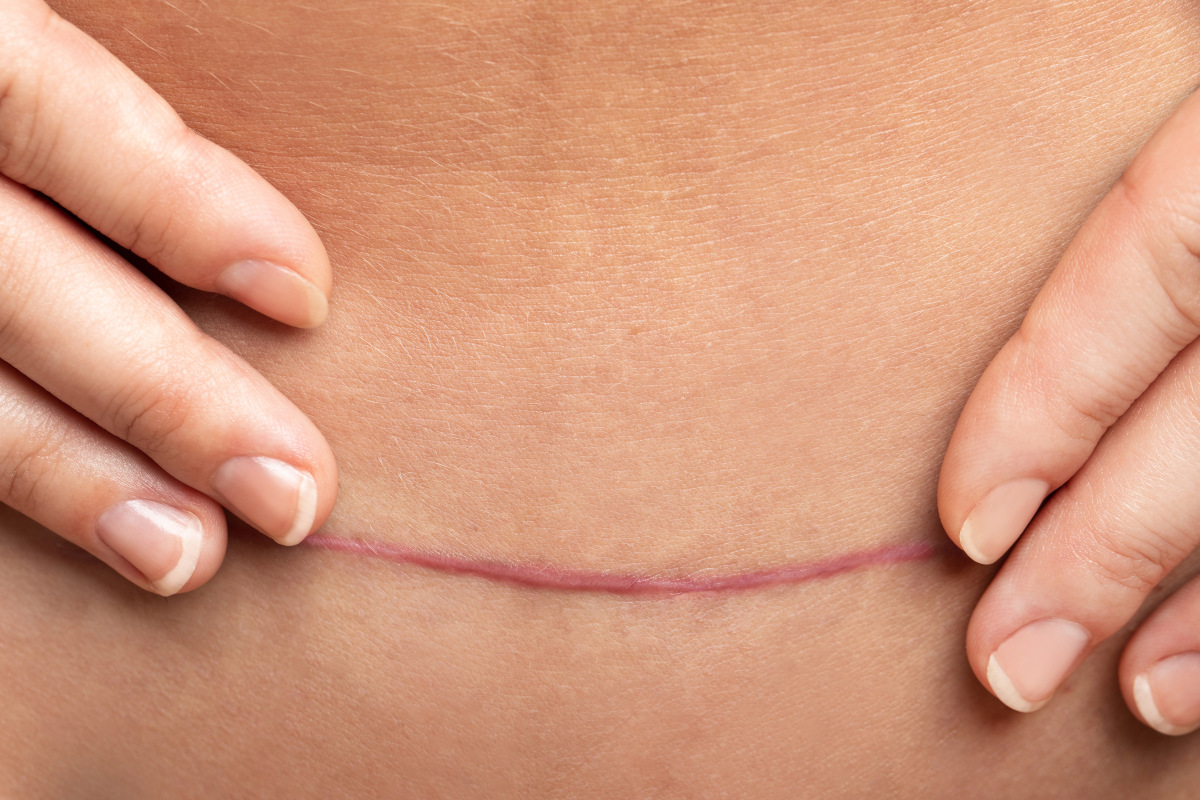As a Walnut Creek Plastic Surgeon, scars are something I am frequently asked about. Here I will try to explain the indications, goals and likely results of scar revision. This information is for general information purposes. This may provide a framework to help you with discussing scar revision; however, it cannot replace an in person consultation. In order to pick the best plan for you, a careful history and examination is necessary.

The scar above is red and slightly raised. This may be normal, early healing or a mildly hypertrophic scar, not a keloid. Keloids grow beyond the area of injury and over time may continue to grow.
What Makes a Good Scar?
A Good Scar matches the surrounding skin. It is smooth, flat, thin and matches the surrounding tissues in color and texture. It is painless, soft and does not restriction motion or cause distortion of adjacent structures.
The ideal scar revision would remodel a scar into a smooth surface, resembling the surrounding skin in all respects. If this were possible, a scar would be virtually invisible. Unfortunately, a scar cannot be completely erased, but a scar can often be improved, by reducing the qualities that make it obvious.
The Goals of Scar Revision
The goal of Scar Revision is to get as close as possible to the ideal result, and make the scar less noticeable. Here are some as some qualities that plastic surgeons try to create in the revised scar:
- A fine line scar (narrow is best)
- Falling within, or parallel to, naturally occurring lines, wrinkles, contour junctions, or resting skin tension lines (perpendicular to the underlying muscle fibers).
- Free of contour irregularities (no lumps or depressions).
- Without abnormal pigmentation (not too dark, not too light).
- Void of contractures or distortions of the surrounding tissue. (not too tight)
In planning a Scar Revision, it is important to first determine what makes the scar apparent, and focus on the methods most likely to improve these attributes. For example, if a scar is raised, silicone gel sheeting can help to flatten it. However, using silicone gel sheeting on a dressed scar is not likely to help. The correct tool for the job can only be selected after deciding what the job is.
How Does Scar Revision Help
There are many different ways to treat a scar, and most help in at least one of the following ways:
- Improving the direction of the scar.
- Decreasing the width of the scar.
- Dividing the scar into smaller segments.
- Correcting misalignment or distortion of adjacent tissues.
- Improving surface irregularities.
- Improving pigment discrepancies.
There is too much information to cover it all in one post, so I will leave it here for now. Next time, I will provide some more details about how to evaluate a scar, and to see if a revision is likely to help.
Previous Post Next Post